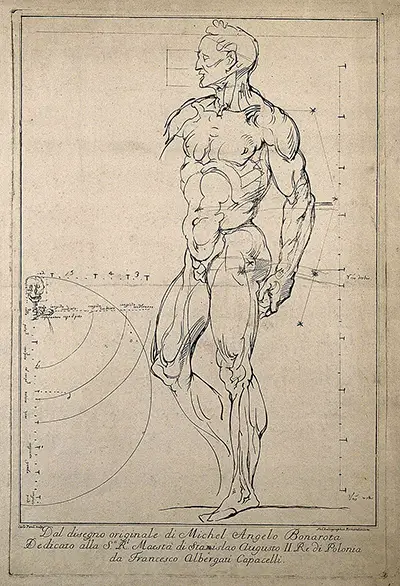An écorché is an artwork that strips away the skin of a portrait in order to display the muscular detail found below. Vitruvian Man, by Leonardo da Vinci, shows have detail can be achieved on the muscle whilst still retaining the skin.
This style of drawing was an ideal way of practicing and understanding the different muscles that make up the human body so that the artist's work would be more accurate and believable. These could also serve an educational purpose for students who chose to study science.
The fact that this engraving was produced from an earlier Michelangelo drawing is confirmed by the inscription which sits at the bottom. This also serves as another example of the Italian master's incredible anatomical skills which had been learnt over years of practice and combined with his own natural genius.
The finest draughtsmen would frequently have their drawings made up into etchings. It was a way in later centuries for artists to spread the impact of their name and reputation, helping to earn commissions in neighbouring countries. Some of the more business-minded artists would even build financial stability on the back of a constant supply of prints to the domestic and European markets.


